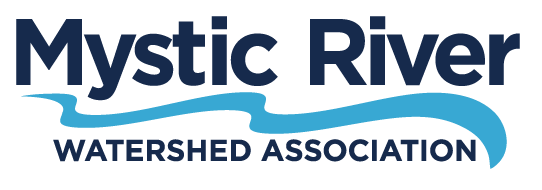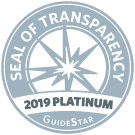MyRWA strongly supports the EPA’s determination to invoke the Clean Water Act (CWA) residual designation authority (RDA) – in particular its application to commercial, industrial, and institutional (CII) properties with an impervious surface of an acre or more – in the three urbanized watersheds of greater Boston: the Mystic, Charles and Neponset River watersheds.
The Mystic, Charles, and Neponset River Watershed Associations present their 2023 report card grades at an event alongside EPA, Mass DEP, and other partners. Credit: David Mussina
MyRWA recently submitted a comment letter to the Environmental Protection Agency (EPA) sharing our support for a permit that would regulate stormwater runoff from privately owned properties with an impervious surface cover of an acre or more, requiring landowners to limit the amount of nutrient pollution coming from their properties.
MyRWA has worked with community members for over 50 years to better understand the risks to water quality in the Mystic River. In particular, MyRWA partnered for several years on an effort led by the US-EPA Region 1, the Massachusetts Department of Environmental Protection, and other agencies to investigate the impacts of excess nutrient pollution — common in highly urbanized watersheds like ours.
What we have come to understand is that significantly reducing nutrient pollution in the river – particularly phosphorus – is integral to achieving a healthy, safe, and resilient Mystic River in alignment with the Clean Water Act. Regulatory action from EPA in the form of this permit (referred to as the “RDA” or “CII GP” permit) is a powerful tool to get us to this goal.
Stormwater Pollution
Cyannobacteria Bloom on the Mystic River. Credit: Jack Bitney
Stormwater is another word for rain and melting snow. Stormwater pollution happens when the water picks up pollutants, flushing them down the nearest drain. Pollutants are then transported through underground pipe networks directly to our lakes, rivers, and streams.
One particularly impactful pollutant in stormwater is phosphorus, which comes from dead plants and leaves, fertilizer, and other organic waste. Phosphorus can cause toxic algal blooms that are dangerous to people and deadly to pets. It can also speed up the growth of invasive plants, which can reduce the amount of oxygen in the water that fish need to breathe.
Areas with more impervious surfaces – like roads, parking lots, and roofs that can’t absorb and filter water – contribute more to stormwater pollution, which is why regulations on property owners are so crucial for addressing the problem.
What does the RDA Permit Require?
The RDA Permit requires that private landowners of large parcels do their fair share in reducing the amount of stormwater pollution from their properties. The Mystic River watershed itself is more than 40% impervious cover. Private entities benefit directly from the high percentage of impervious cover in urban landscapes – everything from access to customers, to parking, to connections to transportation corridors. Therefore, we believe it is fair that private landowners should share the costs of the environmental impacts to public water resources that stem directly from impervious surface.
Developers are already required by municipal ordinances to reduce phosphorus coming from their properties – specifically, a 60% total phosphorus reduction from impervious areas for new development and 50% for redevelopment. The RDA Permit extends that same requirement to existing large-scale impervious areas owned by private businesses and institutions.
This reduction would be possible through common-sense and cost-effective solutions, including street sweeping and the construction of green infrastructure solutions.
For 50 years, the Mystic River Watershed Association has pursued a collaborative, science-based approach to fulfilling its mission of protecting and restoring the Mystic River, its tributaries, and green spaces in ways that protect public health and the public’s interests in recreational uses of and the ecological integrity of water bodies in the watershed. We support the RDA Permit as a key tool for advancing that goal. Read the full comment letter below:







